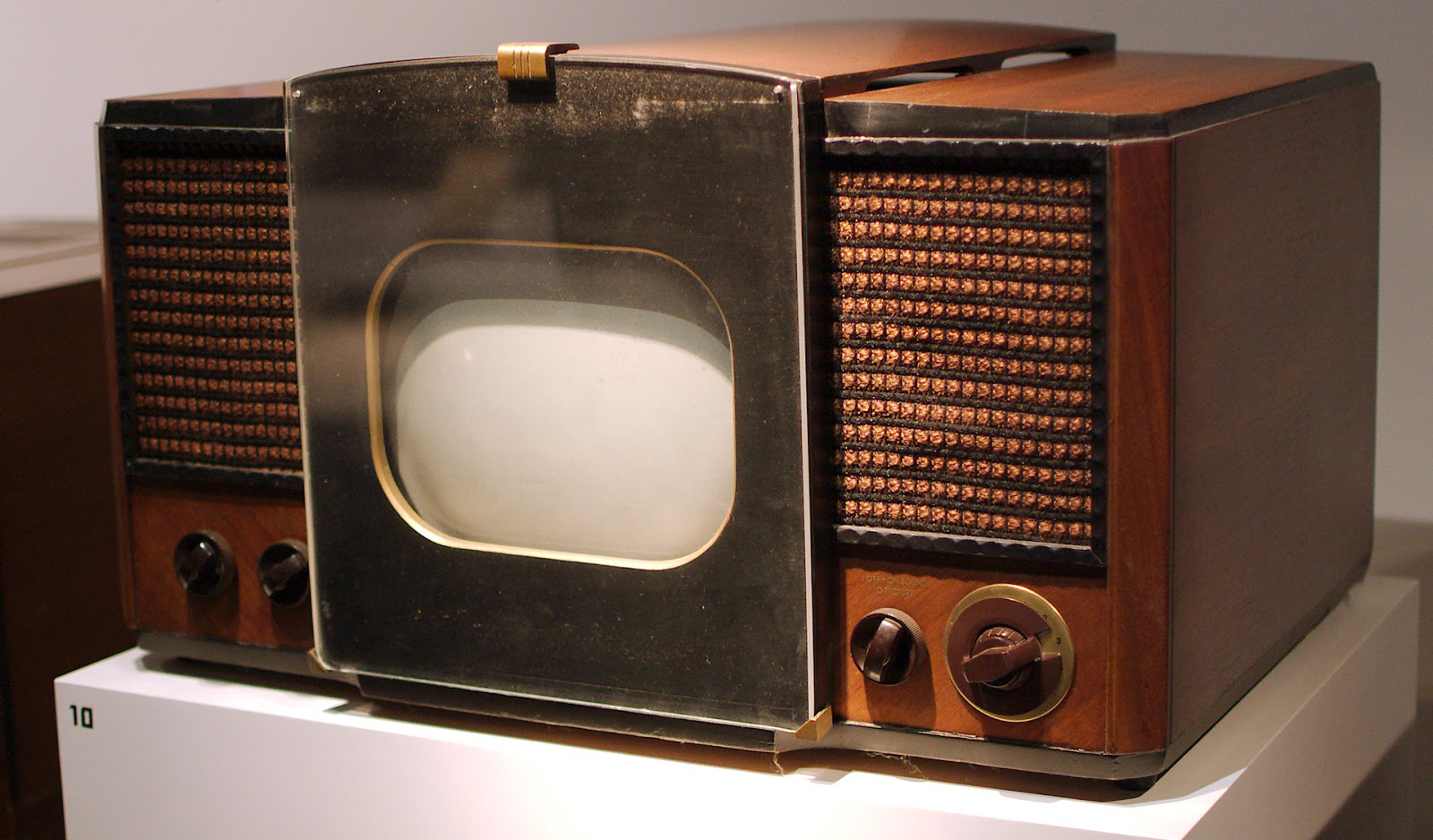Home>Technology>Home Entertainment Systems>When Was Television Introduced To Australia


Home Entertainment Systems
When Was Television Introduced To Australia
Modified: August 20, 2024
Discover the history of television in Australia and its impact on home entertainment systems. Learn about the introduction and evolution of TV technology.
(Many of the links in this article redirect to a specific reviewed product. Your purchase of these products through affiliate links helps to generate commission for Storables.com, at no extra cost. Learn more)
**
Introduction
**
Television has been an integral part of Australian culture for decades, serving as a primary source of entertainment, information, and cultural influence. The evolution of television in Australia has been a fascinating journey, reflecting the nation's technological advancements, societal changes, and media landscape. From the early experiments to the widespread adoption of television sets in Australian households, the medium has significantly impacted the way people consume content and connect with the world around them.
Television's influence extends beyond mere entertainment; it has shaped public discourse, political engagement, and popular culture. This article delves into the historical milestones, technological innovations, and societal implications of television in Australia, offering a comprehensive exploration of its profound impact on the nation's identity and collective consciousness.
As we embark on this journey through the annals of Australian television history, we will uncover the pioneering spirit of early television experiments, witness the watershed moment of the first television broadcast, trace the growth and development of television in Australia, and examine the enduring impact of this ubiquitous medium on Australian society. Join us as we illuminate the captivating story of television's evolution in the land down under, from its humble beginnings to its status as a cultural cornerstone.
**
Key Takeaways:
- Television was introduced to Australia in 1956, marking a transformative era in mass communication and entertainment, shaping the nation’s cultural landscape and societal norms.
- The impact of television on Australian society has been profound, shaping popular culture, fostering social change, and reflecting the nation’s evolving identity, leaving an indelible mark on the fabric of Australian life.
Read more: When Was Television Introduced To America
Early Television Experiments
**
In the early 20th century, as the world stood on the cusp of technological revolution, ambitious inventors and engineers embarked on groundbreaking experiments to transmit moving images through the airwaves. Australia, with its spirit of innovation and quest for progress, eagerly joined the global pursuit of television technology.
One of the foremost figures in these early experiments was Ernest Fisk, an Australian electrical engineer and visionary who played a pivotal role in the development of television. Fisk, in collaboration with renowned inventor and television pioneer John Logie Baird, conducted experimental broadcasts in the 1920s, laying the foundation for the future of television in Australia.
These early television trials were characterized by ingenuity and perseverance, as inventors and scientists grappled with the technical challenges of transmitting and receiving visual signals. The quest to harness the power of electromagnetism to convey moving images captured the imagination of the public and the scientific community alike, heralding a new era of communication and visual storytelling.
As the experimental broadcasts gained momentum, they ignited public fascination and curiosity, foreshadowing the transformative impact that television would soon have on Australian society. These pioneering endeavors paved the way for the emergence of television as a powerful medium that would revolutionize the way people received information and experienced entertainment.
The early television experiments not only showcased the innovative spirit of Australian inventors and engineers but also signaled the dawning of a new age in communication and mass media. The seeds of a revolutionary technology had been sown, and the stage was set for the next pivotal chapter in the history of Australian television.
**
The First Television Broadcast
**
The watershed moment in the history of Australian television arrived on September 16, 1956, when the nation bore witness to its first official television broadcast. The event marked a transformative juncture, as it heralded the dawn of a new era in mass communication and entertainment.
The inaugural broadcast, emanating from the studios of TCN-9 in Sydney, captivated audiences with a range of compelling programming, including variety shows, news segments, and drama productions. The transmission of moving images and synchronized sound through the airwaves represented a technological marvel, captivating the imagination of viewers and signaling the arrival of a revolutionary medium.
Australian households eagerly embraced the advent of television, with crowds gathering in electronics stores and public spaces to witness the historic broadcast on screens that had become portals to a new realm of visual storytelling. The impact of this groundbreaking event reverberated across the nation, igniting a fervor for the possibilities offered by this transformative medium.
The first television broadcast not only showcased the technical prowess of the engineers and broadcasters involved but also underscored the profound societal shift that was underway. Television swiftly evolved into a central fixture of Australian homes, shaping leisure activities, family dynamics, and cultural consumption patterns.
As the flickering images illuminated the screens of eager viewers, a new chapter in Australian history unfolded—one characterized by the fusion of technology and storytelling, the democratization of information, and the communal experience of shared narratives. The first television broadcast stands as a testament to the power of innovation and the enduring allure of visual media, forever altering the fabric of Australian society and leaving an indelible mark on the nation’s collective memory.
**
Television was first introduced to Australia in September 1956, with the launch of the Australian Broadcasting Commission (ABC) and the commercial station TCN-9 in Sydney.
Growth and Development of Television in Australia
**
Following the momentous debut of television in Australia, the medium experienced rapid expansion and evolution, reshaping the nation’s cultural landscape and media ecosystem. The proliferation of television sets in households across the country ushered in an era of unprecedented access to information, entertainment, and shared experiences.
As the demand for compelling content surged, Australian broadcasters rose to the occasion, producing a diverse array of programs that catered to the varied interests of viewers. From iconic dramas and beloved sitcoms to insightful news coverage and captivating sporting events, television became a dynamic platform for storytelling and cultural expression.
The introduction of color television in 1975 further elevated the viewing experience, infusing vibrant hues into the living rooms of Australians and enhancing the visual allure of televised content. This technological advancement marked a significant milestone in the evolution of television, captivating audiences with lifelike imagery and immersive viewing experiences.
Television networks played a pivotal role in shaping the national conversation, providing a platform for public discourse, artistic expression, and societal reflection. The medium’s ability to unite disparate communities through shared narratives and collective moments fostered a sense of interconnectedness and cultural cohesion.
Moreover, the emergence of dedicated children’s programming and educational content underscored television’s potential as a tool for learning and enrichment. From informative documentaries to thought-provoking debates, television served as a window to the world, expanding horizons and fostering intellectual curiosity.
As the television landscape continued to evolve, the advent of digital broadcasting and the proliferation of streaming services further transformed the way audiences engaged with content. The accessibility of on-demand programming and interactive viewing experiences ushered in a new era of personalized entertainment, empowering viewers to curate their own media consumption habits.
The growth and development of television in Australia reflect the nation’s enduring appetite for compelling narratives, diverse voices, and shared moments of cultural significance. From the early black-and-white broadcasts to the immersive high-definition experiences of today, television has remained a steadfast companion, enriching lives and shaping the collective imagination of Australians.
**
Impact of Television on Australian Society
**
Television’s pervasive influence on Australian society transcends its role as a mere source of entertainment, encompassing profound implications for cultural attitudes, societal norms, and collective consciousness. The medium’s ability to shape public discourse, cultivate shared experiences, and reflect the nation’s evolving identity has left an indelible mark on the fabric of Australian life.
One of the most notable impacts of television has been its role in shaping popular culture and fostering a sense of national identity. Iconic programs, memorable advertisements, and televised events have become touchstones of shared nostalgia, uniting Australians across generations and geographical divides. Television has served as a mirror to the nation’s aspirations, challenges, and triumphs, capturing the essence of Australian ethos and heritage.
Moreover, television has been a catalyst for social change, amplifying voices, and narratives that have challenged prevailing norms and sparked crucial conversations. From groundbreaking news coverage to thought-provoking documentaries, television has played a pivotal role in raising awareness about pressing social issues and advocating for greater inclusivity and understanding.
The medium’s influence extends to the realm of politics and civic engagement, as televised debates, election coverage, and current affairs programs have shaped public opinion and informed the electorate. Television has served as a vital conduit for democratic discourse, providing a platform for diverse perspectives and empowering citizens to participate in the democratic process.
Furthermore, television has been instrumental in fostering cultural literacy and broadening horizons, exposing audiences to diverse worldviews and fostering empathy and understanding. Educational programming, travel documentaries, and insightful cultural showcases have enriched the intellectual landscape of Australian viewers, nurturing a spirit of curiosity and global awareness.
While television has undeniably enriched the lives of Australians, it has also sparked debates about media consumption habits, screen time, and the impact of advertising on consumer behavior. As the digital age ushers in new modes of content delivery and consumption, television continues to evolve, presenting both opportunities and challenges in shaping the societal fabric.
Ultimately, the impact of television on Australian society stands as a testament to the medium’s enduring power to inform, inspire, and unite. As television continues to adapt to the changing media landscape, its influence on the nation’s cultural tapestry remains an ever-present and transformative force.
**
Read more: When To Introduce Security Blanket
Conclusion
**
The evolution of television in Australia is a testament to the medium’s enduring impact on the nation’s cultural, social, and technological landscape. From its humble beginnings as an experimental endeavor to its status as a ubiquitous presence in Australian households, television has woven itself into the fabric of the nation’s identity, shaping collective experiences and reflecting the aspirations of its people.
The early television experiments, marked by ingenuity and perseverance, laid the groundwork for a transformative medium that would captivate audiences and redefine the nature of storytelling. The first television broadcast stands as a pivotal moment that heralded the dawn of a new era in mass communication, uniting Australians in shared moments of visual spectacle and cultural resonance.
As television proliferated in Australian homes, it became a conduit for shared experiences, cultural expression, and societal reflection. The growth and development of television, marked by technological advancements and diverse programming, mirrored the nation’s evolving tastes, values, and collective imagination.
Television’s impact on Australian society has been multifaceted, influencing popular culture, fostering social change, and shaping public discourse. It has served as a catalyst for national unity, providing a platform for diverse voices and narratives that have enriched the nation’s cultural tapestry.
As television continues to adapt to the digital age, its influence remains a dynamic and transformative force, reflecting the ever-changing nature of media consumption and societal engagement. The enduring allure of television lies in its ability to inform, inspire, and unite, transcending technological boundaries to become a cherished companion in the lives of Australians.
As we reflect on the captivating story of television’s evolution in Australia, we are reminded of its profound impact on the nation’s collective consciousness, cultural heritage, and shared memories. Television has not only entertained and informed but has also connected communities, amplified diverse voices, and illuminated the path to a more inclusive and empathetic society.
As the journey of television in Australia continues, it stands as a testament to the enduring power of storytelling, the resilience of innovation, and the unifying force of shared experiences. The medium’s legacy will endure, shaping the narratives of tomorrow and leaving an indelible imprint on the Australian ethos for generations to come.
Frequently Asked Questions about When Was Television Introduced To Australia
Was this page helpful?
At Storables.com, we guarantee accurate and reliable information. Our content, validated by Expert Board Contributors, is crafted following stringent Editorial Policies. We're committed to providing you with well-researched, expert-backed insights for all your informational needs.















0 thoughts on “When Was Television Introduced To Australia”